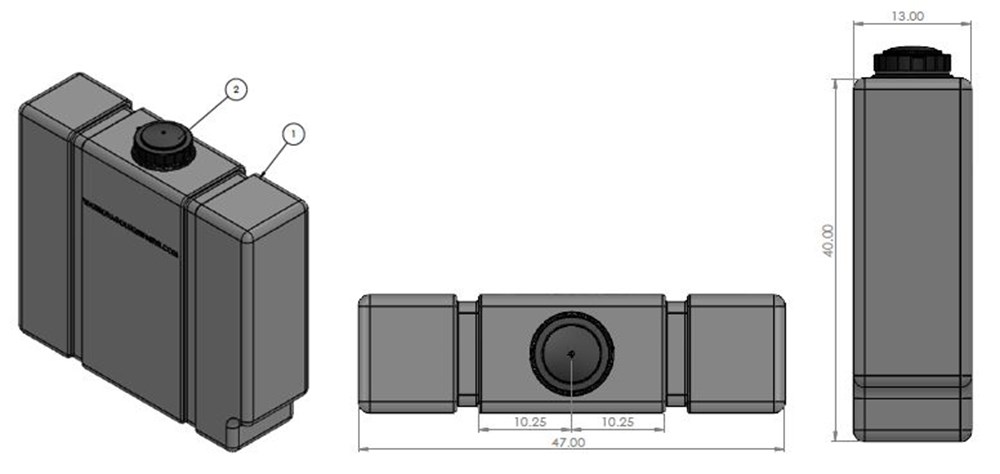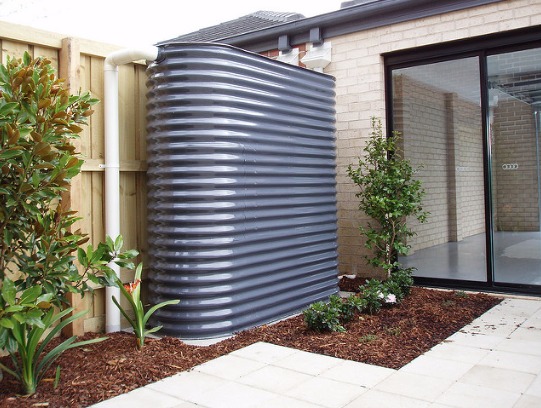Comprehending the Importance of Rainwater Tanks in Drought-Prone Regions for Water Safety
In areas susceptible to prolonged dry spells, the role of rainwater tanks in bolstering water safety is a topic of growing significance. As areas face the difficulties of water shortage, recognizing the relevance of these storage tanks surpasses plain collection of rain. Rain tanks act as a crucial tool in alleviating the influence of water shortages by giving a sustainable source of water for different needs. However, the real worth of rain tanks expands far beyond mere storage space; it encompasses resilience-building actions and the promotion of long-term water preservation strategies. This complex technique to water security warrants a more detailed exam of the role rain storage tanks play in making sure a reliable water supply throughout times of drought.
Advantages of Rainwater Containers
Making use of rainwater tanks supplies a sustainable service for augmenting water system and improving water protection in property and business setups. One of the key benefits of rain tanks is their capacity to reduce reliance on mains supply of water. By capturing and saving rainwater that falls on rooftops, this alternate source can be used for numerous non-potable purposes such as watering, flushing commodes, and washing clothes. This not just saves treated drinking water yet likewise reduces water costs for users.

Rainwater Harvesting Methods
Rain gathering strategies encompass a variety of techniques designed to effectively accumulate and save rainwater for different objectives, contributing to water preservation and sustainability. Another prominent method is the use of above-ground or underground storage tanks to keep rain for later usage.

In addition, rain yards and absorptive pavements are cutting-edge techniques that include landscaping or paving surface areas in such a way that allows rainwater to percolate right into the ground, replenishing groundwater reserves. In addition, shape farming and terracing are agricultural practices that help record rainwater and stop dirt disintegration in sloping terrain. By executing these varied rainwater harvesting methods, areas can enhance water safety and security and resilience in drought-prone regions while promoting lasting water management practices.
Relevance of Water Safety And Security
Making certain reputable access to clean and enough water sources is critical for maintaining human wellness, economic development, and ecological well-being. Water protection is a critical aspect of social strength, specifically in areas at risk to droughts and water shortage. Appropriate water security incorporates different dimensions, including availability, quality, and ease of access of water for domestic, farming, industrial, and ecological needs.
Water protection plays an important role in promoting public wellness by minimizing the occurrence of waterborne conditions and making certain sanitation facilities. Economically, water protection is necessary for farming efficiency, industrial operations, and overall economic growth. Slimline water tanks. Furthermore, water safety is carefully linked to ecological sustainability, as it sustains ecosystems, biodiversity, and general ecological balance.
In drought-prone regions, water security comes to be much more important because of the increased threat of water lacks. Implementing strategies like rainwater harvesting, water recycling, and efficient water management techniques can dramatically enhance water safety in these locations. By focusing on water protection, areas can better stand up to the effects of climate modification, populace growth, and various other challenges that intimidate water availability.
Enhancing Water Resilience
With boosting global water challenges, developing durability in water supply has ended up being an essential focus for sustainable advancement efforts. Enhancing water durability entails executing strategies to make sure water availability and quality despite changing ecological problems, such as dry spells, floodings, and pollution.
One news secret aspect of boosting water strength is advertising the use of rain containers in drought-prone areas - Slimline water tanks. Rainwater tanks act as an effective ways of recording and storing rainwater for later usage, lowering reliance on limited freshwater sources throughout dry durations. By integrating rain harvesting systems right into water administration strategies, communities can improve their capability to withstand water scarcity and keep water safety and security

Sustainable Water Conservation
Among escalating water obstacles, the prudent administration of water the original source resources via sustainable conservation techniques is necessary for guaranteeing long-term environmental stability and social well-being. Lasting water conservation requires the efficient use water resources to meet current needs without compromising the ability of future generations to satisfy their very own needs. By executing strategies such as rainwater harvesting, greywater recycling, and water-efficient technologies, neighborhoods can decrease water wastage and minimize stress on freshwater sources.
In addition, sustainable water conservation techniques contribute to ecosystem health by keeping internet sufficient water levels in rivers, lakes, and wetlands, supporting biodiversity, and preserving all-natural habitats. These practices also play an essential duty in alleviating the impacts of environment modification by aiding to adapt to transforming precipitation patterns and water availability.

Verdict
In final thought, rainwater tanks play an essential role in enhancing water protection and durability in drought-prone regions. By making use of rainwater harvesting techniques, neighborhoods can lower their reliance on traditional water sources and promote lasting water conservation methods. This not just aids alleviate the impacts of water scarcity throughout dry spells yet likewise adds to lasting water safety and resilience when faced with climate adjustment challenges.